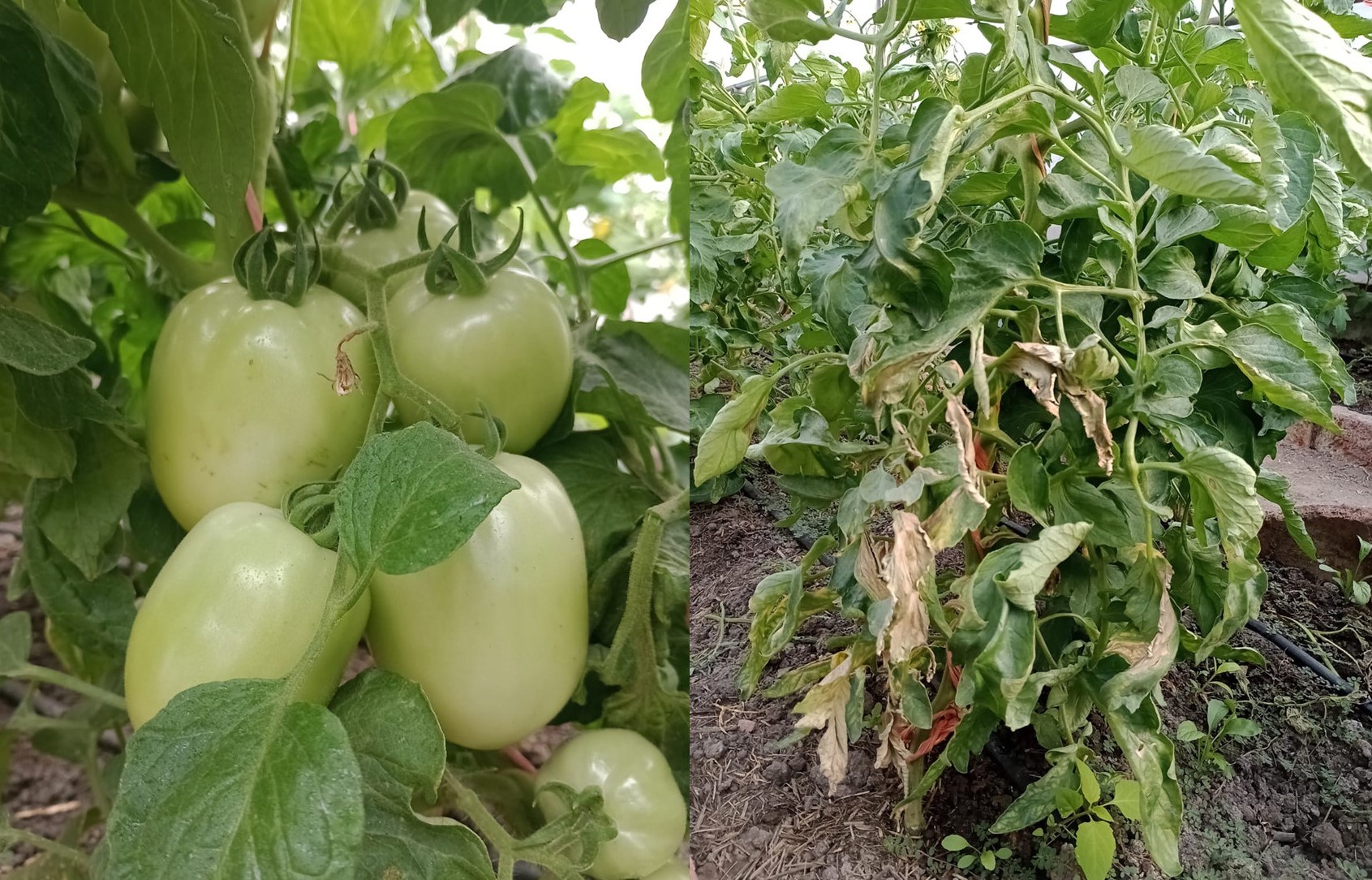Control preventivo del cáncer bacteriano mediante aplicación de agua electrolizada en cultivo de tomate
Palavras-chave:
agua electrolizada oxidante, fitopatógeno, Clavibacter michiganensisResumo
http://dx.doi.org/10.37114/abaagrof/2023.6
e2023-2
Referências
Al-Qadiri HM, Al-Holy MA, Shiroodi SG, Ovissipour M, Govindan BN, Al-Alami N, Rasco B. 2016. Effect of acidic electrolyzed water-induced bacterial inhibition and injury in live clam (Venerupis philippinarum) and mussel (Mytilus edulis). International Journal of Food Microbiology. 231:48-53. https://doi:10.1016/j.ijfoodmicro.2016.05.012
Fujiwara K, Fujii T, Park J. 2009. Comparison of foliar spray efficacy of electrolytically ozonated water and acidic electrolyzed oxidizing water for controlling powdery mildew infection on cucumber leaves. Ozone: Science & Engineering. 31(1):10-14. https://doi:10.1080/01919510802587358
Fujiwara K, Fujii T, Park J. 2011. Successive spraying efficacy of acidic electrolyzed oxidizing water and alkalic electrolyzed reducing water on controlling powdery mildew infection and suppressing visible physiological disorder on cucumber leaves. Horticulture, Environment and Biotechnology. 52(4).387-392. https://doi:10.1007/s13580-011-0174-9
Guentzel JL, Callan MA, Liang Lam K, Emmons SA, Dunham VL. 2011. Evaluation of electrolyzed oxidizing water for phytotoxic effects and pre-harvest management of gray mold disease on strawberry plants. Crop Protection. 30(10):1274-1279. https://doi:10.1016/j.cropro.2011.05.021
Hsu S, Kao H. 2004. Effects of storage conditions on chemical and physical properties of electrolyzed oxidizing water. Journal of Food Engineering. 65(3):465-471. https://doi:10.1016/j.jfoodeng.2004.02.009
Jang H, Kim ST, Sang MK. 2022. Suppressive Effect of Bioactive Extracts of Bacillus sp. H8-1 and Bacillus sp. K203 on Tomato Wilt Caused by Clavibacter michiganensis subsp. michiganensis. Microorganisms. 10(2):403.
http://dx.doi.org/10.3390/microorganisms10020403
Kim C, Hung Y. 2012. Inactivation of E. coli O157:H7 on blueberries by electrolyzed water, ultraviolet light, and ozone. Journal of Food Science. 77(4):206-211. https://doi:10.1111/j.1750-3841.2011.02595.x
Nandi M, Macdonald J, Liu P, Weselowski B, Yuan ZC. (2018), Clavibacter michiganensis ssp. michiganensis: bacterial canker of tomato, molecular interactions and disease management. Molecular Plant Pathology. 19: 2036-2050.
https://doi.org/10.1111/mpp.12678
Orzali L, Valente MT, Scala V, Loreti S, Pucci N. 2020. Antibacterial Activity of Essential Oils and Trametes versicolor Extract against Clavibacter michiganensis subsp. michiganensis and Ralstonia solanacearum for Seed Treatment and Development of a Rapid In Vivo Assay. Antibiotics. 9(9):628. http://dx.doi.org/10.3390/antibiotics9090628
Ovissipour M, Al-Qadiri HM, Sablani SS, Govindan BN, Al-Alami N, Rasco B. 2015. Efficacy of acidic and alkaline electrolyzed water for inactivating Escherichia coli O104:H4, Listeria monocytogenes, Campylobacter jejuni, Aeromonas hydrophila, and Vibrio parahaemolyticus in cell suspensions. Food Control. 53:117-123. https://doi:10.1016/j.foodcont.2015.01.006
Pangloli P, Hung Y. 2011. Efficacy of slightly acidic electrolyzed water in killing or Reducing Escherichia coli O157:H7 on iceberg lettuce and tomatoes under simulated food service operation conditions. Journal of Food Science. 76(6):361-366. https://doi:10.1111/j.1750-3841.2011.02219.x
Quan Y, Choi KD, Chung D, Shin IS. (2010). Evaluation of bactericidal activity of weakly acidic electrolyzed water (WAEW) against Vibrio vulnificus and Vibrio parahaemolyticus. International Journal of Food Microbiology. 136(3):255–260.
https://doi:10.1016/j.ijfoodmicro.2009.11.005
Rivera-Sosa LM, Ramírez-Valverde G, Martínez-Yáñez B, Judith-Hernández A, Aranda-Ocampo S. 2022. Response of tomato (Solanum lycopersicum) varieties to Clavibacter michiganensis subsp. michiganensis infection. Revista mexicana de fitopatología. 40(1):18-39. https://doi.org/10.18781/r.mex.fit.2106-8
Sen Y, Feng Z, Vandenbroucke H Wolf J, Viser R, Heusden AW. 2013. Screening for new sources of resistance to Clavibacter michiganensis subsp. michiganensis (Cmm) in tomato. Euphytica. 190:309–317. https://doi.org/10.1007/s10681-012-0802-1
Takishita Y, Charron JB, Smith DL. 2018. Biocontrol Rhizobacterium Pseudomonas sp. 23S Induces Systemic Resistance in Tomato (Solanum lycopersicum L.) Against Bacterial Canker Clavibacter michiganensis subsp. michiganensis. Frontiers in Microbiology. 9. https://doi:10.3389/fmicb.2018.02119
Tancos MA, Chalupowicz L, Barash I, Manulis-Sasson S, Smart CD. 2013. Tomato fruit and seed colonization by Clavibacter michiganensis subsp. michiganensis through external and internal routes. Applied and environmental microbiology. 79(22):6948–6957. https://doi.org/10.1128/AEM.02495-13
Xu X, Rajashekara G, Paul PA, Miller SA. 2012. Colonization of tomato seedlings by bioluminescent Clavibacter michiganensis subsp. michiganensis under different humidity regimes. Phytopathology. 102(2):177–184. https://doi.org/10.1094/PHYTO-03-11-0090

Downloads
Publicado
Edição
Seção
Licença

Este trabalho está licenciado sob uma licença Creative Commons Attribution-NonCommercial 4.0 International License.


